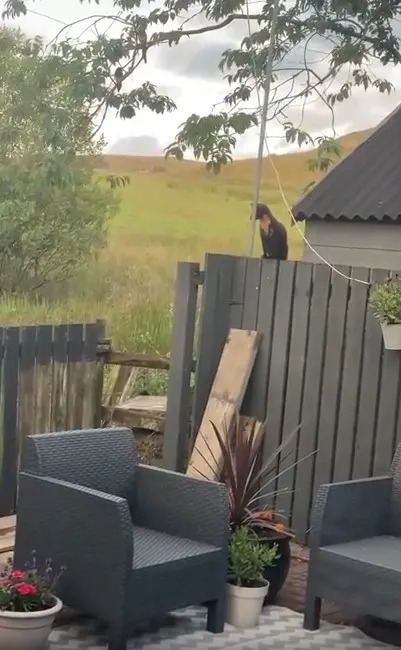This item is interesting as really the Pine marten should not have been where it was. We do know that there have been successful releases and litters around the UK of a mammal humans slaughtered on sight. But I have in my EAR files reports of pine martens in the 1990s and in the Somerset area where official groups told me (as if I was stupid so why report the matter) they were not.
My sources were credible and experience persons -one a naturalist. Where exactly were these sightings in Somerset? Not telling because back then, as now, we know that there are plenty of people wanting to get rid of them illegally and, of course, the 'sportsmen' who want a rarity.
But how did the Somerset pine martens escape the attention of the people who should know they were there? Simple; the "people who should know" were never told so could not take credit for the discovery and definitely could not, as they would have, given out a location. The other question is how long had the martens been at the locations? We had no idea because anyone who sighted them kept quiet and myself and the naturalist involved decided to not even snoop around the areas in case we were seen.
In the 1990s I discovered the open secret that a group had been breeding and releasing pairs of European wildcats around the country to fill in the niche left by the actual extinct wild cats (including on the Scottish borders). Who were these people? Where did they get these cats? Organisations in the "know" did know but claimed that they did not but were aware of these cats in the areas reported. It is also probable that this group released pine martens before the official release project.
Today I have heard of pine marten being bred for the "exotic animal" trade rather as porcupines, meerkats, raccoon dogs and others are. These animals do escape and I have reported on them in the past on the Exotic Animals Register blog as well as Face Book page.
Was this Scottish marten just lost or an escapee pet? It is highly probable that we will never know but I hope it finds suitable habitat soon.
The Cool Down
https://uk.yahoo.com/style/homeowner-discovers-very-rare-predator-073000665.html
Homeowner discovers ‘very rare’ predator lurking in their garden: ‘This may be a newsworthy sighting’
A Reddit user from Scotland recently spied a rare predator in their backyard.
They took to r/AnimalID to put a finger on the wily mammal, as it was threatening birds perched in the low limb of a tree.
In the 15-second video, the animal climbed atop a fence and looked around before scurrying away.
Users formed a consensus that the animal is a pine marten.
“It’s my understanding that those guys are currently very rare in Scotland,” one commenter wrote. “This may be a newsworthy sighting. I would strongly suggest you contact a local conservation agency and send them this footage. If he’s killing your birds they’ll likely relocate him for you.”
Another said: “Pretty cool to see them, they’re pretty shy most of the time. And rare these days.”
The creature was once found all over Britain, but it was hunted mercilessly until it was given legal protection in 1988, according to NatureScot. Scotland is now home to about 3,700 adult pine martens.
Pine martens prefer to live in woodlands, often in hollow trees, old squirrel, or old bird nests, and require 86 to 166 hectares (213 to 410 acres) of territory. They survive on rodents, birds, eggs, insects, and fruit.
“The Scottish Wildlife Trust has been running a successful pine marten recovery programme, and sightings of these elusive creatures are becoming more common,” according to Experience Scotland’s Wild.
The pine marten population in Northern Ireland is bouncing back as well, nearly doubling in five years, the BBC reported in May.
The species could also help the red squirrel population, as those native rodents have adapted to live among pine martens, while the invasive gray squirrel has not.
“They say that once a squirrel could run from one side of Europe to the other without touching the ground, leaping from tree to tree,” one user wrote. “And that he’d be followed the whole way by a hungry pine marten.”
Another said: “They are amazing creatures. Definitely bring any cats and small livestock indoors. Do not approach because they are sometimes cranky. Call a wildlife management official if you don’t want it around.”























